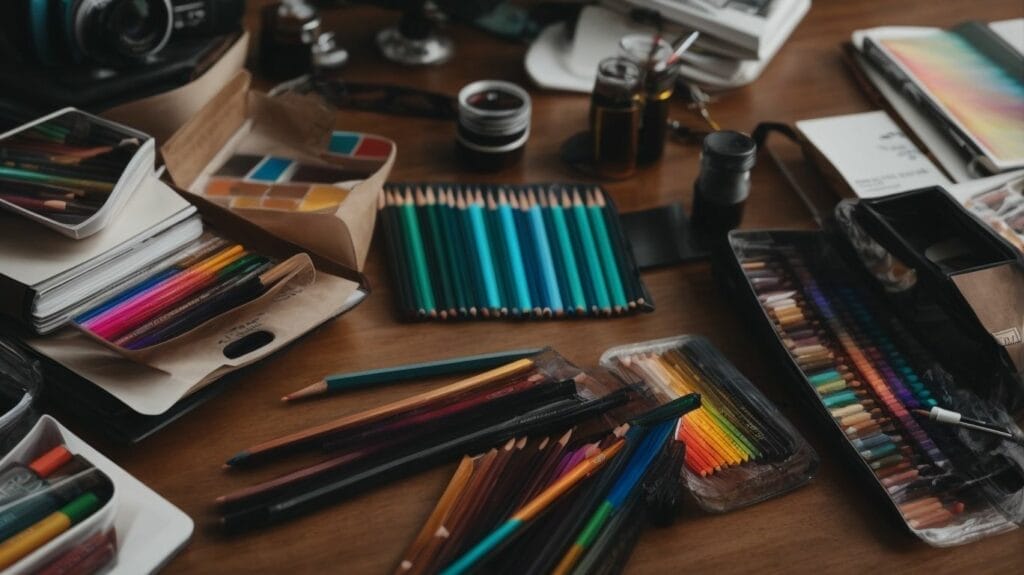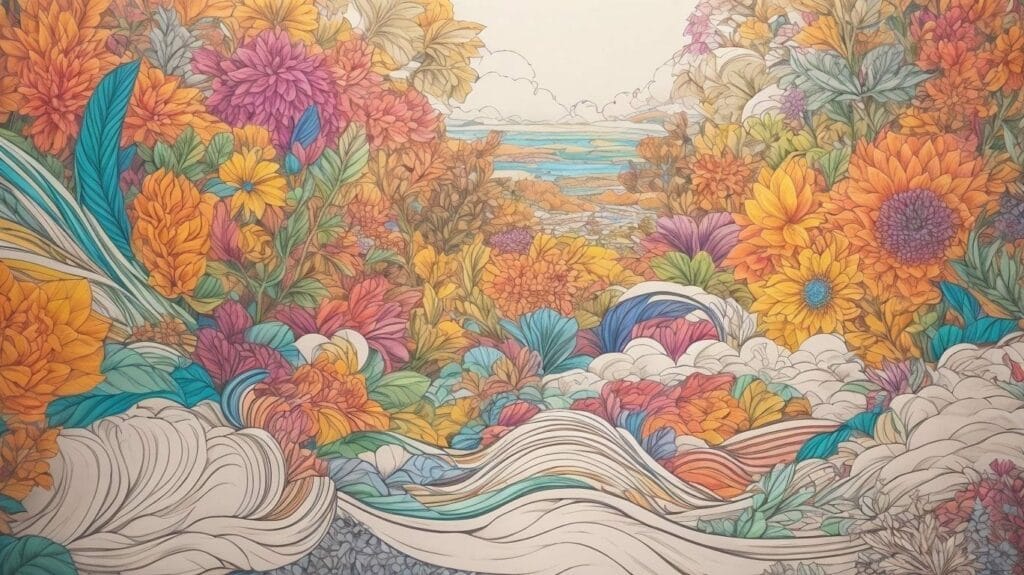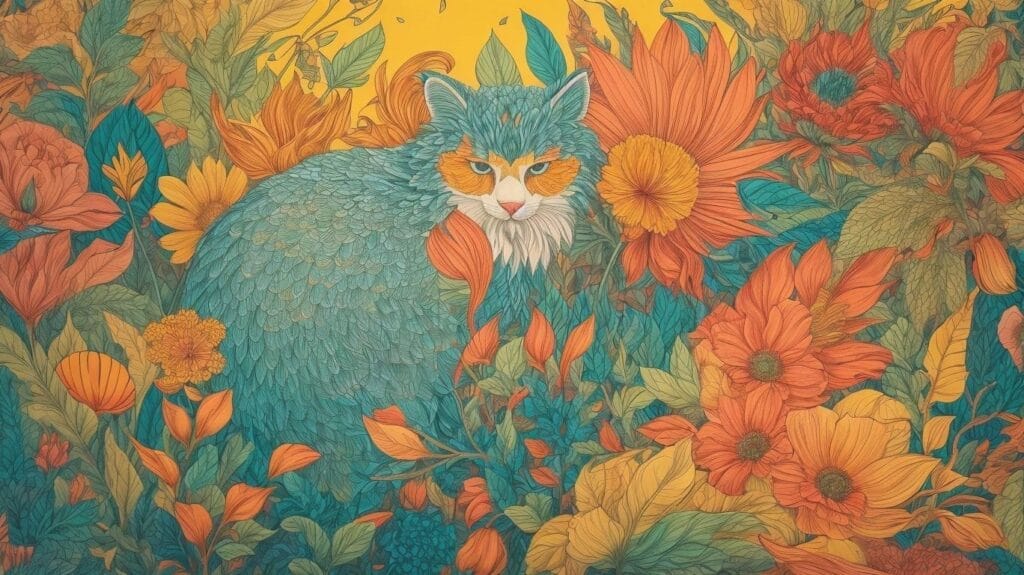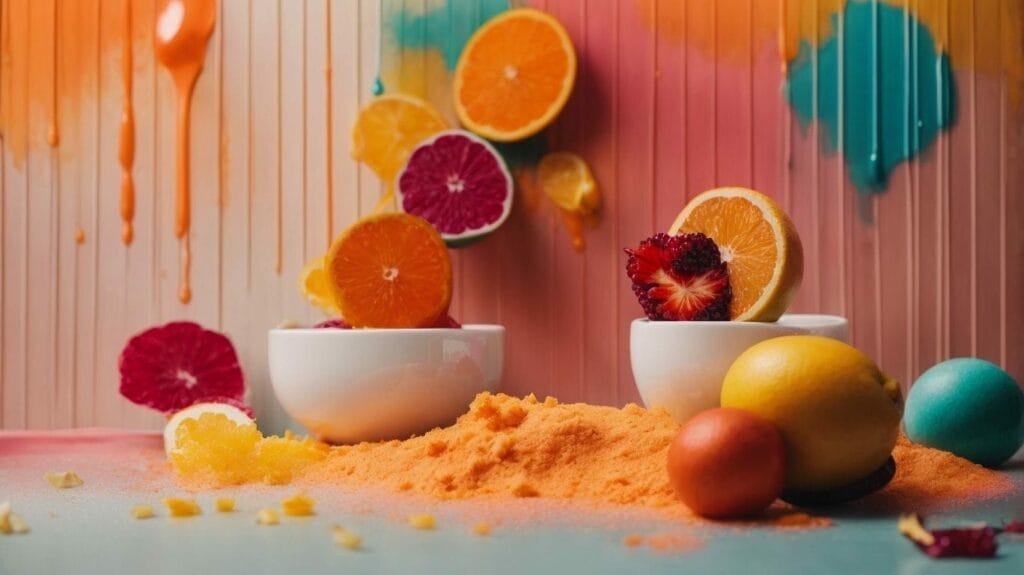Welcome to the ultimate guide for adult coloring enthusiasts! Whether you’re a seasoned colorist or just starting, this comprehensive article will equip you with essential tips and resources to take your coloring skills to the next level. We’ll delve into the basics of adult coloring, help you choose the right supplies, explore various coloring techniques, and highlight common mistakes to avoid.
From mastering colored pencils to optimizing your work with different media, we’ve got you covered. We’ll focus on improving your coloring skills by discussing blending and shading techniques, adding highlights and details, creating textures and gradients, and effectively using a color palette. By the end of this article, you’ll be armed with the knowledge and techniques to elevate your adult coloring experience. So, grab your coloring tools and get ready to unleash your creativity!
Key Takeaways:
- Choose the right supplies for a smooth coloring experience
- Avoid common mistakes like using too much pressure on colored pencils
- Improve coloring skills through blending and shading techniques
Introduction to Adult Coloring
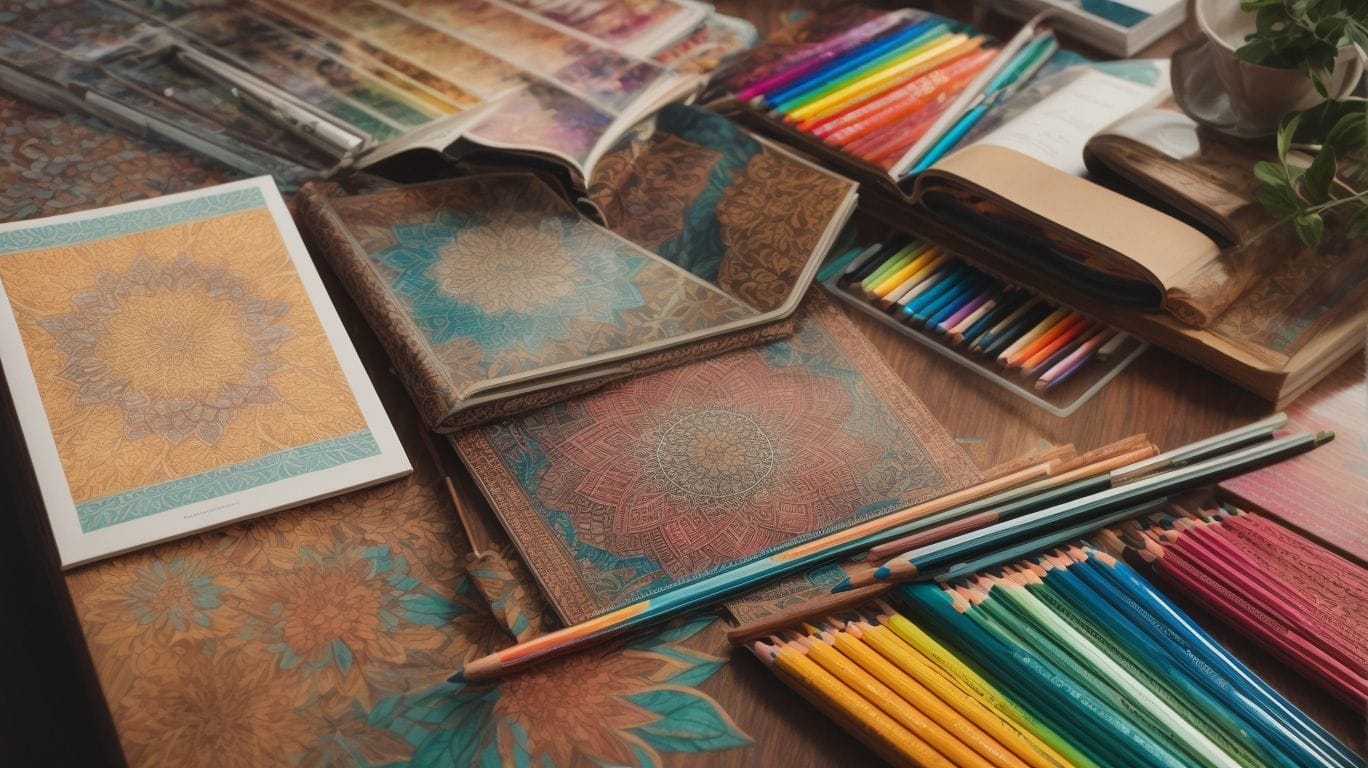
Credits: Loststorystudios.Com – Michael Baker
Adult coloring has become a popular stress-relief activity, allowing individuals to unleash their creativity and relax through the use of various coloring supplies such as pencils, markers, and gel pens. The art of coloring, often associated with renowned artists such as Picasso, Van Gogh, and Bob Ross, has undergone a renaissance, with brands like Crayola, Prismacolor, Polychromos, Copic, and Tombow offering a wide range of tools and color choices.
Not only is coloring a delightful pastime for adults, but it also holds historical significance in the world of art. From the intricate stained glass windows of medieval cathedrals to the vibrant illustrations in ancient manuscripts, coloring has been a revered form of artistic expression for centuries.
Today, adult coloring books and pages feature intricate designs and mandalas, offering a therapeutic outlet for stress reduction and relaxation.
Understanding the Basics
Understanding the basics of adult coloring involves familiarizing oneself with the variety of tools available, such as colored pencils, markers, and gel pens, and the diverse array of adult coloring books that cater to different themes and intricacy levels.
Colored pencils are a popular choice for adult coloring due to their ease of use and ability to produce intricate details. They come in a wide range of colors and are often preferred for their blend-ability.
Markers offer vibrant and bold colors, making them suitable for those who enjoy creating vibrant and striking artworks. Their versatility allows for both fine lines and broader strokes.
Gel pens are prized for their smooth application and ability to add shimmer and shine to coloring pages. They are excellent for adding accents and intricate details.
In terms of adult coloring books, the options are vast, including botanical designs, intricate mandalas, calming scenes, and intricate patterns. These books often come with high-quality paper, single-sided printing, and perforated pages for easy removal.
Choosing the Right Supplies
Selecting the right coloring supplies is crucial for achieving the desired artistic effects, whether it’s the precision of colored pencils, the vibrancy of markers, or the intricate details achievable with gel pens.
Colored pencils offer a wide range of hues, allowing for subtle shading and blending. They are ideal for intricate designs and detailed work. On the other hand, markers bring bold and intense colors to paper and other surfaces, making them perfect for larger areas and creating eye-catching effects. Gel pens, known for their smooth and flowing ink, are great for adding fine lines and adding intricate patterns to your art.
Exploring Different Coloring Techniques
Exploring different coloring techniques can elevate the quality of the artwork, whether it’s mastering shading with pencils, blending colors with markers, or adding intricate details with gel pens to bring the images to life.
In terms of shading with pencils, varied pressure, and layering techniques can create depth and dimension, enhancing the visual appeal of the illustration. Meanwhile, blending colors with markers offers a seamless transition between hues, resulting in vibrant and smooth gradients. Utilizing gel pens for intricate detailing allows for precise lines and embellishments, adding a touch of complexity and sophistication to the overall composition.
Common Mistakes in Adult Coloring
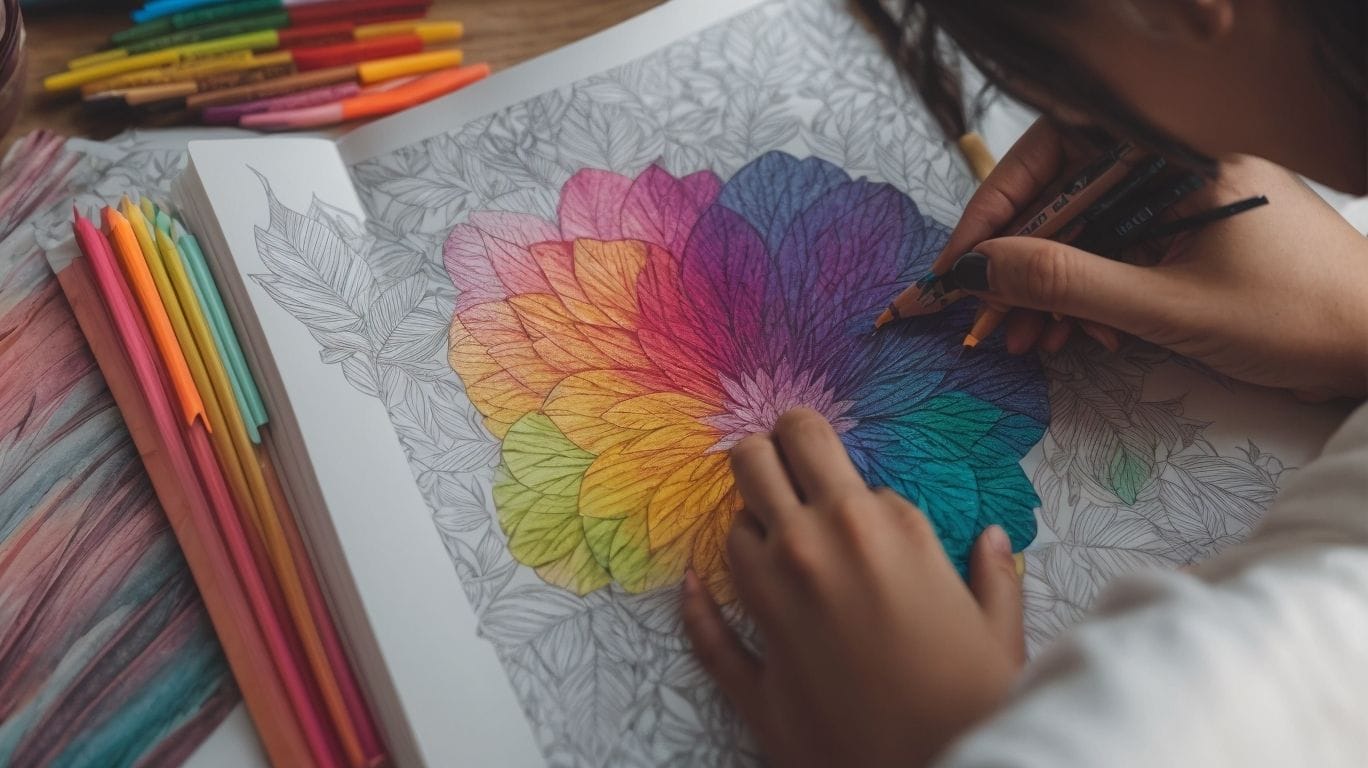
Credits: Loststorystudios.Com – David Wilson
While engaging in adult coloring, it’s common to encounter mistakes that can impact the overall outcome, whether it’s over-saturation with markers, lack of blending with pencils, or excessive use of gel pens, which can lead to finger fatigue and potential hand-related issues like carpal tunnel syndrome.
Selecting the wrong type of paper for coloring can affect the quality of the finished work. Using thin paper may cause bleeding of colors onto the next page and limit the ability to layer shades effectively. Inappropriate posture during extended coloring sessions can strain the neck and back. It’s vital to have adequate support for the arms and back to avoid discomfort and potential long-term health issues. Not taking regular breaks and constantly gripping the coloring utensils tightly can lead to hand cramps and tension. To prevent these problems, it’s essential to use quality coloring materials, maintain good coloring techniques, and take breaks to stretch and relax the hands.
Avoiding Pitfalls with Colored Pencils
Avoiding common pitfalls with colored pencils involves understanding the importance of proper shading techniques, preventing overworking the paper, and addressing issues such as color wax build-up that can compromise the artwork’s quality.
When using colored pencils, shading techniques play a vital role in creating depth and dimension in your artwork. It’s essential to layer and blend colors with a light hand, gradually building up the intensity to avoid applying too much pressure, which can lead to wax bloom and an uneven finish.
Choosing the right type of paper is equally important. Look for a toothy, textured surface that can grip the pigment, allowing you to achieve better layering and blending. Regularly cleaning your pencils and using a colorless blender can help prevent wax build-up, ensuring consistent color application and a smoother finish.
Mastering the Use of Alcohol Markers
Mastering the use of alcohol markers entails honing shading skills, avoiding streaking or bleeding, and understanding the layering process to achieve seamless color transitions and vibrant hues without compromising the paper’s integrity.
It’s essential to use a feather-light touch when applying the alcohol markers to create a smooth and even coverage, especially when shading. Experimenting with various pressures and angles can yield different shading effects, allowing for greater depth and dimension in the artwork. Constantly rotating the markers to maintain their tip shape and prevent streaking is crucial.
Understanding the behavior of alcohol-based inks and how they interact with different paper types is also vital in preventing bleeding and achieving optimal blending.
Enhancing Your Work with Gel Pens
Enhancing artwork with gel pens involves mastering the art of adding fine details, avoiding smudging, and understanding the compatibility of gel ink with different paper textures to prevent potential mistakes that can impact the final presentation.
Making the most of gel pens requires patience, precision, and knowledge of certain techniques. When adding fine details, it’s beneficial to work slowly and steadily, allowing the ink to flow smoothly onto the surface. To prevent smudging, it’s essential to let the ink fully dry before adding layers or touching the artwork. Selecting the appropriate paper with a smooth and non-absorbent texture can help maintain the vibrancy of the gel ink without bleed-through or feathering.
Optimizing Coloring with Various Media
Optimizing the coloring process with various media involves understanding the strengths of pencils, markers, and gel pens and effectively combining them to create intricate textures, vibrant color palettes, and seamless shading for visually striking artwork.
Colored pencils offer precise control and rich layering capabilities, allowing artists to achieve nuanced details and smooth transitions between colors. On the other hand, markers provide intense pigmentation and the ability to cover large areas quickly, making them ideal for bold and vibrant color applications. Meanwhile, gel pens offer the versatility of fine lines and opaque coverage, adding intricate highlights and accents to the artwork.
By strategically incorporating these mediums, artists can leverage the unique properties of each to enhance the overall visual impact of their creations. For instance, layering colored pencils over marker base layers can add depth and dimension, while using gel pens for fine details and highlights can bring a stunning level of realism to the artwork.
Improving Coloring Skills

Credits: Loststorystudios.Com – Roger Williams
Improving coloring skills involves mastering blending and shading techniques, adding highlights and intricate details, creating diverse textures and gradients, and effectively utilizing a vibrant color palette to bring the artwork to life.
Blending colors seamlessly is an essential skill. It involves carefully layering different hues to achieve smooth transitions. Practice varying the pressure on your coloring utensils to control the intensity of the colors, allowing them to merge harmoniously. Shading is equally crucial in creating depth and dimension. Use cross-hatching or stippling techniques to portray shadows and highlights accurately, adding depth to your artwork. Attention to intricate details, such as tiny lines or small accents, can elevate the overall quality of your coloring.
Blending and Shading Techniques
Mastering blending and shading techniques requires a nuanced approach, combining the use of pencils, markers, and gel pens to create seamless color transitions, realistic textures, and depth within the artwork.
Experimenting with layering different hues and controlling pressure on the art medium can also significantly impact the blending and shading outcomes. It’s essential to understand the color theory, such as complementary and analogous colors, to achieve harmonious blends.
Practicing various stroke techniques, including stippling, hatching, and cross-hatching, can enhance the depth and texture of the artwork. Utilizing blending tools like blending stumps, tortillons, or brush pens can aid in achieving smooth and effortless transitions between colors.
Adding Highlights and Details
Incorporating highlights and intricate details can elevate the visual appeal of artwork, whether it’s accentuating focal points with pencils, adding depth with markers, or infusing vibrancy with gel pens to bring the illustrations to life.
By strategically using these tools, artists can create a sense of dimension and realism in their work.
The process of layering pencils allows for subtle shading and fine detailing, while markers offer bold, defined lines and rich color application.
Gel pens add a lustrous touch, enhancing the textures and adding a dynamic pop of color to the artwork.
Creating Textures and Gradients
Creating textures and gradients involves leveraging the unique attributes of pencils, markers, and gel pens to achieve diverse visual effects, from smooth gradients to textured surfaces that add depth and dimension to the artwork.
When working with colored pencils, layering and blending different colors can create vibrant textures, mimicking the appearance of various surfaces such as wood grain, fabric, or even skin. The use of varied pressure and directional strokes can further enhance the tactile quality of the textures, making them appear more realistic and engaging to the viewer.
Markers offer a different approach, allowing for seamless blending and transitioning between colors to achieve smooth and flawless gradients. By adjusting the layering and overlapping of colors, artists can create seamless transitions from light to dark tones, evoking a sense of depth and volume in their artwork.
Gel pens, with their smooth and opaque ink, are perfect for adding intricate details and highlights to textures. By carefully layering the gel ink, artists can create glossy surfaces, intricate patterns, or shiny accents that enhance the overall visual appeal of the artwork.
Effective Use of Color Palette
Effectively utilizing a vibrant color palette involves strategic selection, harmonious blending, and thoughtful application of colors to evoke emotion, depth, and visual interest within the artwork, enhancing its overall impact.
When selecting colors, consider the emotional response you want to evoke. For example, warm tones like reds and oranges can convey energy and passion, while cool blues and greens may create a sense of tranquility. Blending these colors in a complementary manner, such as using analogous or complementary color schemes, can enhance the visual appeal and depth of the artwork.
The application technique plays a crucial role. Layering colors, using varying opacities and textures, can add dimension and complexity to the piece, further captivating the viewer. Taking the time to experiment with different blending and application methods can lead to stunning and impactful results.
Conclusion and Next Steps

Credits: Loststorystudios.Com – Eugene Walker
In conclusion, mastering the art of adult coloring requires a blend of creativity, precision, and understanding of various coloring techniques and supplies, paving the way for individuals to embark on their personalized coloring journeys with confidence and enthusiasm.
As individuals explore the vast array of coloring techniques, from shading and blending to intricate patterns and designs, they develop a deep appreciation for the interplay of colors and textures. Achieving mastery in adult coloring doesn’t merely involve filling in outlines but rather entails honing one’s ability to bring intricate illustrations to life with a unique artistic flair. By looking into this creative pursuit, individuals experience a sense of meditative calm and joy, uncovering a profound connection to art and self-expression.
Improving Coloring Skills

Credits: Loststorystudios.Com – Donald Carter
Improving coloring skills involves mastering blending and shading techniques, adding highlights and intricate details, creating diverse textures and gradients, and effectively utilizing a vibrant color palette to bring the artwork to life.
Blending is crucial for creating seamless transitions between colors, whether you are working with pencils, markers, or digital tools. To achieve this, practice layering colors gradually with varying pressure.
Shading, on the other hand, involves understanding light and shadow to create three-dimensional forms. Taking note of light sources and using different pencil pressures can enhance shading. Paying attention to tiny details like fur, scales, or foliage can set your work apart, requiring patience and precision.
Leveraging a variety of techniques, such as stippling, cross-hatching, or stippling, can help in creating different textures and gradients within your artwork.
Frequently Asked Questions
What are some basic coloring tips for beginners?
Some basic coloring tips for beginners include starting with a light hand, using a variety of colors, and practicing blending techniques.
What are some resources for finding coloring inspiration?
Some resources for finding coloring inspiration are online coloring communities, coloring books, and nature.
How can I improve my coloring skills?
You can improve your coloring skills by experimenting with different coloring tools, practicing regularly, and studying color theory.
What are some coloring techniques I should know?
Some important coloring techniques to know are shading, blending, and layering colors.
Are there any online tutorials for coloring techniques?
Yes, there are many online tutorials and videos available for learning various coloring techniques.
Can coloring be therapeutic?
Yes, coloring has been shown to have therapeutic benefits, such as reducing stress and promoting relaxation.
